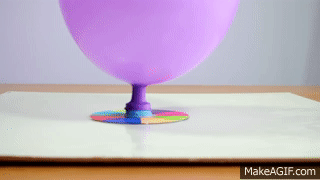7M1 Science
Section outline
-

Kia Ora ākonga!
Welcome to your Pūtaiao (science) course page for 2023. My name is Ms. Katafono and I will be your Science teacher this year. This page is where you will find all the information you will require for your Science course. All tasks and assessments will be placed here as well as additional lesson notes and resources. Please make it a habit to check this page at the start of each week to ensure you are up to date.
This term we will be focusing on the context: Te Matatini . We will be following this context through different bodies of water and safety in and around water. We will be collaborating with Maths and English.
Your kaiako here in the Maunga (Mountains) whānau hope that your year at MHJC will be full of fun and challenging activities that will see you grow as a learner. Enjoy this year and if there are any queries do come see me or feel free to email me - mkatafono@mhjc.school.nz -
EXPLORE / TŪHURA learning intentions:
- We are EXPLORING by identifying observation as a way of gathering evidence
- We are EXPLORING making multiple observations using more than one sense
- We are EXPLORING how to record observations in multiple ways
- We are EXPLORING our context of Te Matatini by recognising whether something is living or non living by using MRSGREN

At the end of last week we looked at lab safety and what could happen if we didn't follow lab rules. You created some awesome videos on flipgrid showing us a tour of the lab and safety equipment located here.
This week we will look at how scientists use observations to collect and record data. We will practice recording our observations in an experiment.
I will attach the activities on google classroom here. We will be doing this during class or as homework. We will also move in to looking at what determines if something is living or non-living.
Success Criteria: I can
- Identify qualitative and quantitative observations
- Use both observation types when writing practical reports
- Understanding what MRSGREN stands for
- Being able to determine whether an object is living or non-living.
Activities:
- See link to google classroom activities above
- Quantitative vs qualitative experiment
- Living vs non.living activities on google classroom.
-
EXPLORE / TŪHURA learning intentions:
- We are EXPLORING our context of Te Matatini by observing the structural adaptations of living things found in forests
- We are EXPLORING our context of Te Matatini by connecting the adaptations of living things in a forest to their particular habitats and recognising how it helps them survive.
- We are EXPLORING our context of Te Matatini by making observations and identifying how conditions impact the growth and survival of forest species.
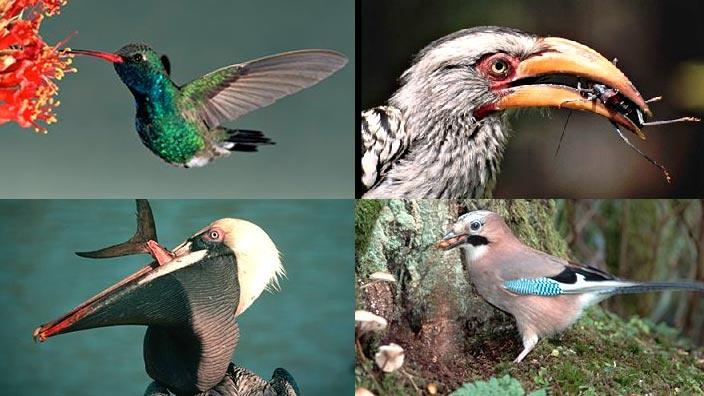
Kia ora ākonga,
This week we will be looking at the different adaptations that living things have and how these help them survive in specific habitats.
Plan for the week is as follows:
Tuesday: Bird beak adaptation experiment
Wednesday: Scientific literacy activity
Thursday: Forest , observations of abiotic vs biotic/ Group observations in nature journal
Success Criteria: I can/have...
- define what adaptations and habitats are
- describe the different adaptations that living things in a rainforest have.
- Explain how the different adaptations of living things help it survive in a particular habitat
Activities:
- Bird beak experiment
- Education perfect - Adaptations / Ecology task
Homework:
EP and Brainpop assigned ( HW and FFR)
-
FOCUS / ARONGA learning intentions:
- We are FOCUSING our context of the Te Matatini by investigating the different adaptations of living things in extremely cold climates.
- We are FOCUSING our context of Te Matatini by experimenting with 'blubber' to investigate how these adaptations help living things survive in cold climates.
- We are FOCUSING our context of Te Matatini by connecting our learning of adaptations to our own way of mimicking animal adaptations to survive in similar conditions

Kia Ora akongā,
This week we will be moving into the colder habitats and discover the different adaptations that living things here, have. We will also look at what biotic and abiotic factors are as well as different examples of structural adaptations.
Plan for the week is as follows:
Tuesday: Adaptations presentation ( Each group will be assigned an animal with a scientist video and information. You will create a presentation identifying the different structural and behavioural adaptations,
Wednesday: Blubber experiment and 'My trip to Antarctica' activity on Google classroom
Thursday/Friday: Backyard exploration. Take pictures of different living things ( biotic and abiotic factors ) in your local area. You will identify what adaptations they have and what habitat they are in.
Success Criteria: I can/have...
- Define abiotic and biotic factors
- Explain why adaptations are important for the survival of a species
Activities:
- Blubber experiment
- 'My trip to Antartica' activity
- Backyard exploration in own backyard
Homework:
Backyard exploration and report on living things and their adaptations/ types -
FOCUS / ARONGA learning intentions:
- We are FOCUSING on the different type of ecosystems in the great outdoors and identifying the different adaptations that animals require for it
- We are FOCUSING on comparing the different ecosystems and features within it to explain why different living things have certain adaptations there

Kia Ora Yr 7 ,
This week we will be finishing off on the different adaptations of animals and move on to the different types of ecosystems and the interactions within it.
Keywords to learn: Biotic, abiotic factors, ecosystem, organism, species, population, community,
Plan for the week is as follows:
Tuesday: Finish of behavioural adaptations, intro to ecosystems . Visit to Ngāhere/Forest to identify the Biotic/Abiotic factors.
Thursday: Design your own animal and its adaptations activity
Success Criteria: I can/have...
- Define the term ecosystem
- Identify living factors in an ecosystem
- Identify non-living factors in an ecosystem
- Describe what would happen if ecosystems were affected by human or natural interventions ( climate change, logging etc)
- Identify biotic and abiotic factors
Activities:
- Design your own animal and its adaptations.
- Scavenger hunt in Tāne identifying ecosystems, finding biotic and abiotic factors
Homework:
Brainpop -
PLAN & DO / WHAKAMAHI learning intentions:
- We are PLANNING to construct interactive food webs and food chains to demonstrate our understanding of the interactions of biotic factors within the ecosystem
- We are PLANNING to apply our knowledge of the impacts of human and natural induced issues to consult and promote the importance of protecting our ecosystems and the interactions within it
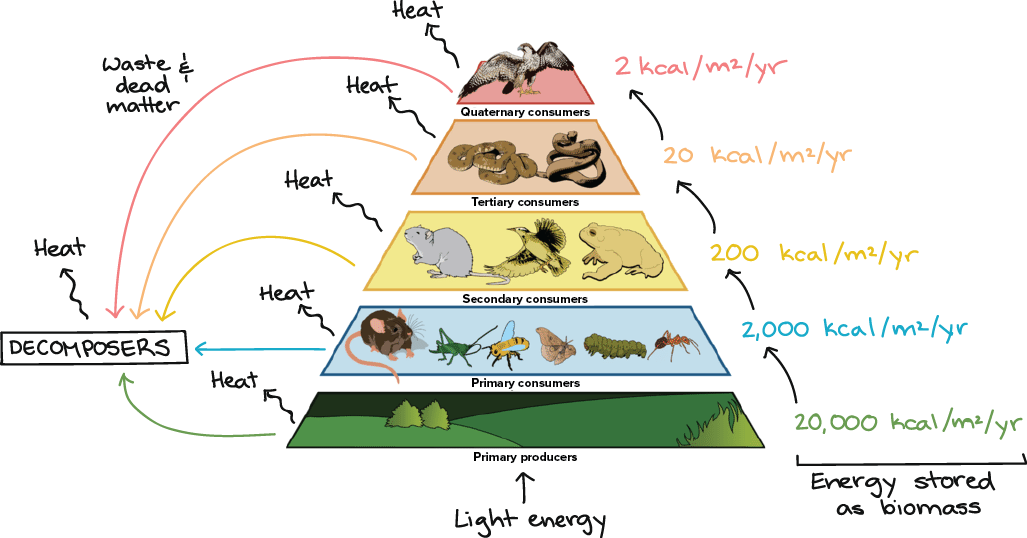
Kia ora ākonga,
This week we will be finishing off our topic in ecology and looking at food chains, and the impacts of humans/nature on habitats and the organisms that live within it.
Plan for the week is as follows:
Tuesday: Food chains/walking food chain activity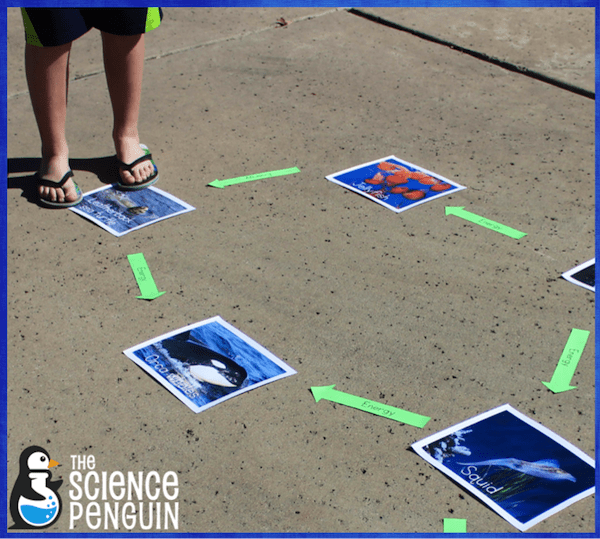
Wednesday: Make your own food chains
Thursday: Watching lorax movie and answering questions in worksheetSuccess Criteria: I can
- describe ecology as the study of organisms and their environment
- Distinguish between producers and consumers
- Distinguish between herbivores, carnivores, omnivores and decomposers
- Draw a food chain and explain the energy transfers occurring
- Use food webs to identify feeding relationships
Activities:
1. Googleclassroom - creating food chains
2. hands-on interactive walking food web
3. Lorax movie and worksheet
-
EXPLORE / TŪHURA learning intentions:
- We are EXPLORING our context of Matariki through Astronomy and organising the different planets in our Solar System in order from the sun.
- We are EXPLORING our context of Matariki through Astronomy and discovering the different components within the Solar System
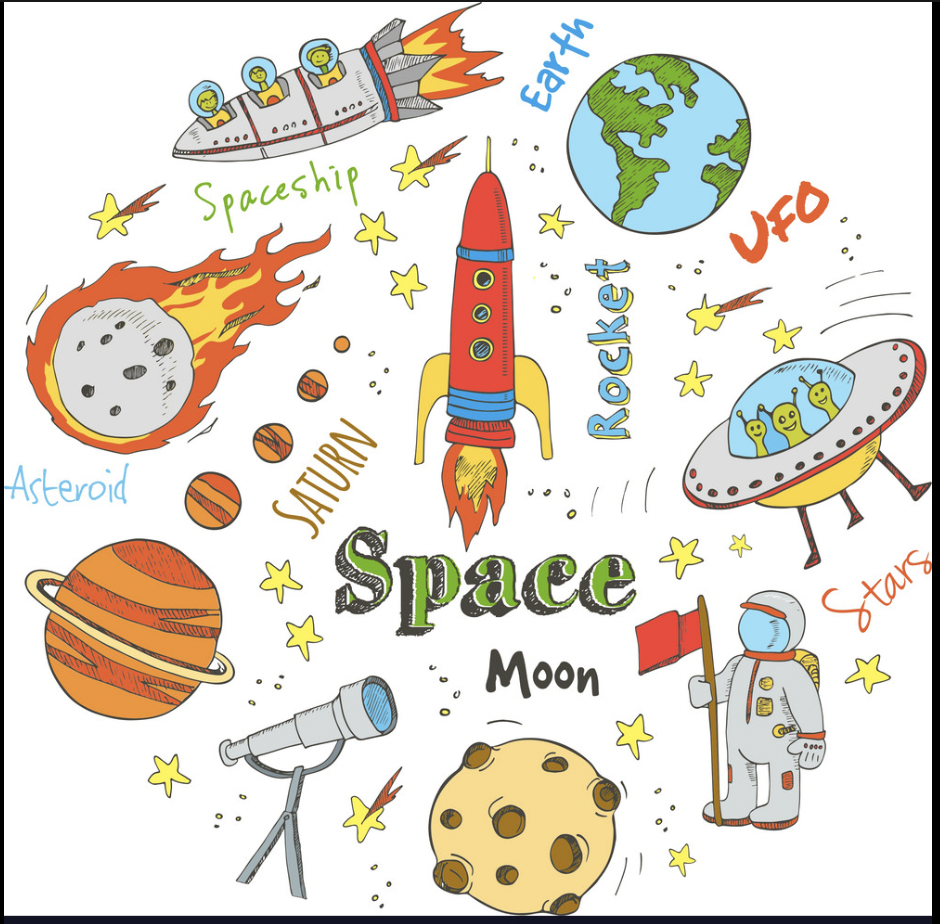
Kia ora ākonga, this Term our context is Matariki and we will be learning about this through the science topic of Earth, Space Science (ESS). We will be collaborating with Maths and English.
Plan for this week is as follows:
Tuesday: Title page and KWL chart - what do we know about this topic from primary school?
Wednesday: Learning about the planets MNEMONIC activity
Thursday: What are the other components in the Solar System that you know of?
Success Criteria: I can/have...
1. To learn about what’s in the solar system
2. To name the planets in our solar system and their order
Activities:
- Wacky MNEMONIC competition
- Dr Who lost in space activity
-
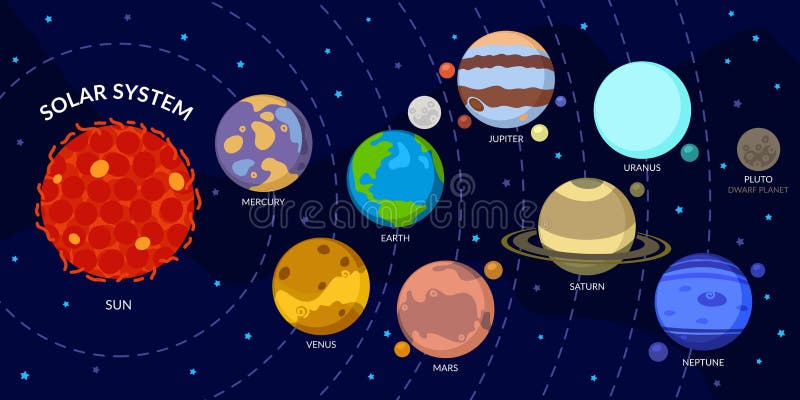
Kia ora ākonga,
Plan for the week is as follows:
Tuesday: Understanding how day and night works /Online scavenger hunt
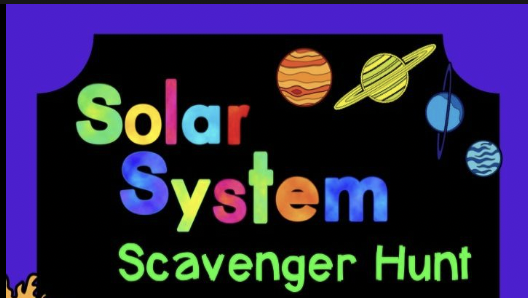
Wednesday: Finishing off scavenger hunt, science book check-in by Ms K.
Thursday: Solar System diorama class art project
Success Criteria for Week 1- Week 5
-
Order of planets from the sun
-
Inner & Outer Planets
-
What the planets look like, relative size of planets, distance from sun
-
Phases of the Moon
-
Identify the different types of stars, different
temperatures, colors, and sizes
-
Describe the Lifecycle of a star
-
Explain how Day & Night occurs
-
Understand how Seasons work
Activities:
- Online scavenger hunt
- Solar system project
-
-
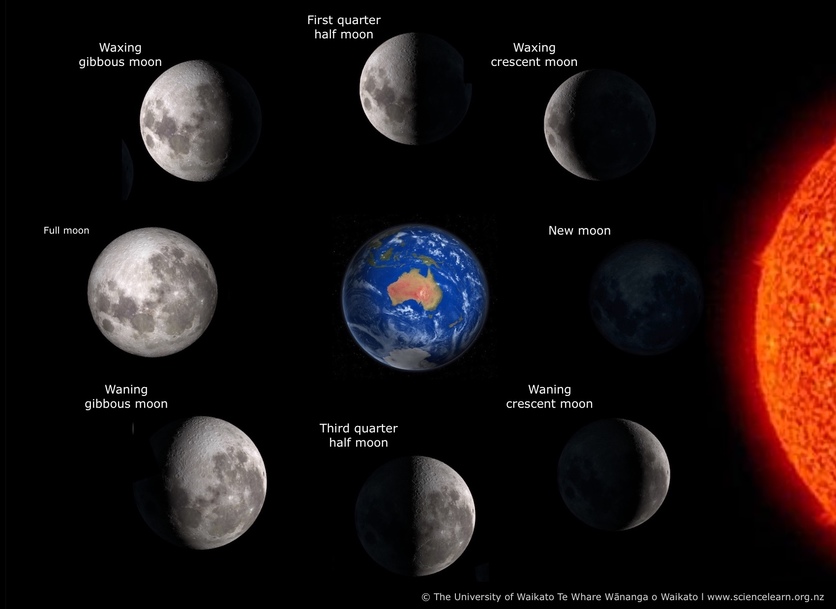
Kia ora 7M1,
This week we will be looking at the moon and the different phases.
Plan for the week is as follows:
Tuesday: Finish Solar System art project and intro into the Moon and its phases
Wednesday: Oreo moon phase activity and worksheet
Thursday: NO School - STRIKE day.
![Oreo Cookie Moon Phases Activity [Free Worksheet] | Mombrite](https://www.mombrite.com/wp-content/uploads/2020/08/Oreo-Cookies-Moon-Phases-Full-Worksheet.jpg)
-
EXPLORE / TŪHURA learning intentions:
- We are EXPLORING our context of Matariki through Astronomy and observing the difference phases of the moon and recognising these.
- We are EXPLORING our context of Matariki through Astronomy and organising the maramataka (Māori lunar calendar) according to times of seasonal harvesting, fishing etc.
- We are EXPLORING our context of Matariki through Astronomy by researching on the life cycle of stars, connecting this to the matariki star cluster, looking at the day/night cycles and seasons and connecting this to the placement of components within the solar system
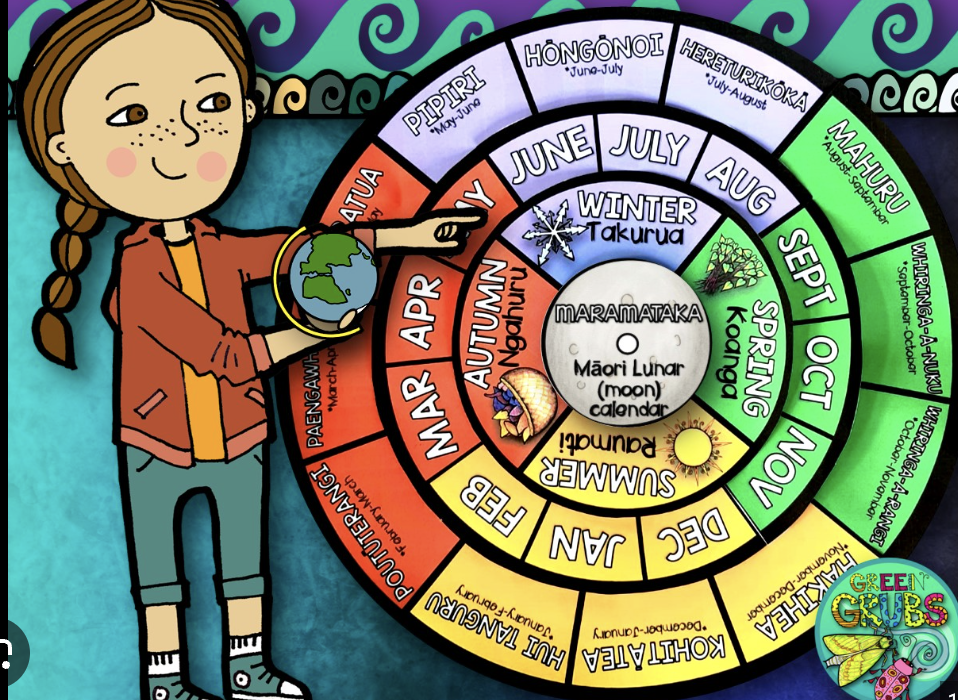
Kia ora ākonga, this week we will finish off with phases of the moon and tides and look at maramataka - the Māori lunar calendar.
Plan for the week is as follows:
Tuesday: Finish off Tides (notes), finish solar system project and have display ready
Wednesday: (Relief) Online scavenger hunt Part 2 on sun, stars and moon ( on Googleclassroom)
Thursday: Maramataka lunar calendar project
Success Criteria: I can/have...
- Understand what causes tides and why sea levels change between high and low tides
- Describe what maramataka is and how this is linked to the moonphases
- Be able to independently search for answers ( with guidance) to find out what stars are, life cycle of stars, moon phases, day and night cycles and seasons.
Activities:
- Online scavenger hunt (part 2)
- Maramataka dial chart
Homework:
Finish off notes and maramataka dial chart. -
PLAN & DO / WHAKAMAHI learning intentions:
- We are PLANNING to apply our understanding of our context of Matariki through our collaborative assessment where you will consult your notes and learning to produce work to demonstrate what you have learnt.

Kia ora Yr 7s. This week I will be introducing our assessment to you all. This is a collaboration between Science, Maths and English. More details will be given in class.
Over the next 2 weeks, I will allow 1 session per week for you to work on your assessment.
Plan for the week is as follows:
Tuesday: Introduce assessment and run through this and explain TAAB and any questions.
Wednesday: Matariki - what is Matariki. Group activity with all the stars assigned to each group and coming up with a slide for your presentation.
Thursday: Do presentation for the 1st half of the lesson and work on your assessment for the 2nd half.
Success Criteria: I can/have...
- Understand what matariki is and what it represents for Māori
- I know the different names of Matariki in different cultures
- I can work in my group to create a slide on the Matariki stars and what it represents , and present this confidently.
Activities:
- Matariki presentation
-
EXPLORE / TŪHURA learning intentions:
- We are EXPLORING the context of Matariki by investigating how Māori myths of the sun compare to the scientific learning of the sun
- We are EXPLORING the context of Matariki by recognising how night and day happen by observing a model and experimenting by creating a sun dial
- We are EXPLORING the context of Matariki and planting by questioning how we have seasons and connecting this to when Māori plant/harvest using maramataka
Kia Ora ākonga,
This week we will be looking at a Māori story explaining day and night and comparing this to western science.
Plan for the week is as follows:
Tuesday: Watching maui and the sun video and answering questions on google classroom. You will then compare this to Earth's orbit and rotation video and answer questions on a google form. Followed by a sundial experiment
Wednesday: Complete brainpop, Seasons on Earch video, worksheet and followed by an experiment
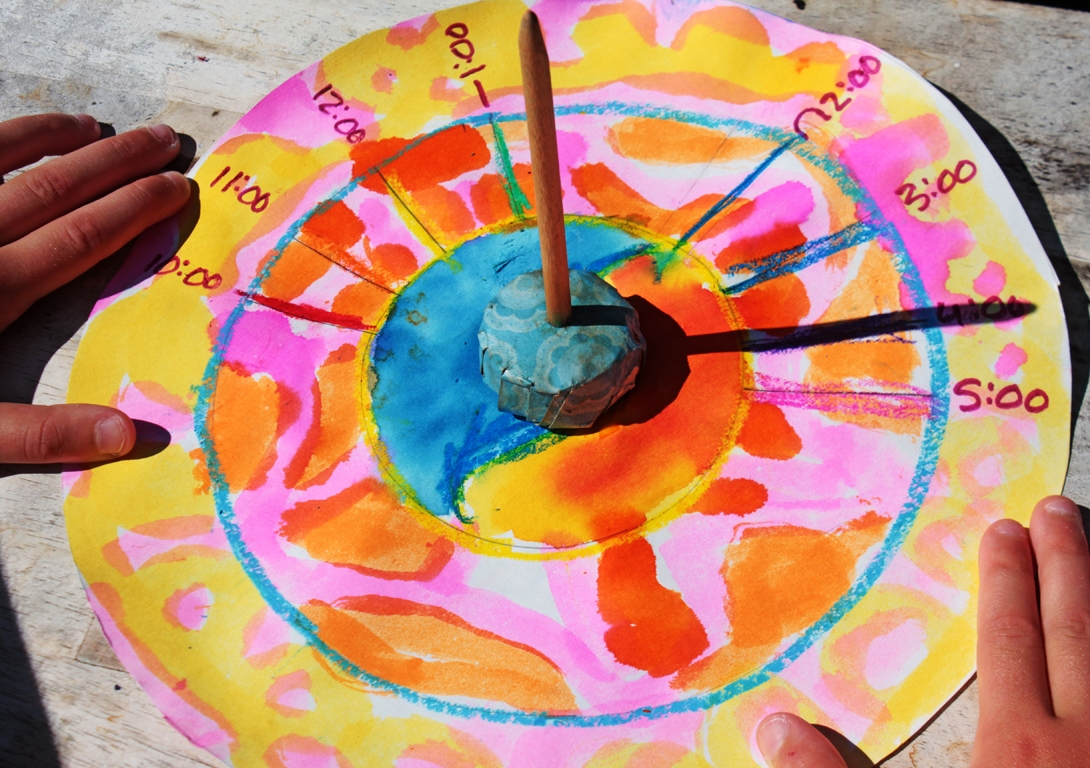
Thursday: Work on your assessment
Success Criteria: I can/have...
Describe the cause of nighttime and daytime.
Explain why we have seasons on Earth.
Define the term month and year
Activities:
- Sun dial experiment
- Seasons activity
- Brainpop
-
FOCUS / ARONGA learning intentions:
- We are FOCUSING on each of the stars within the Matariki cluster and what they represent
- We are FOCUSING on the 3 stars Waitī, Waitā and Waipunārangi and identifying how they are linked to water to explain the water cycle.
Kia Ora ākonga,
This week we will be looking the 3 stars in the Matariki cluster and what they represent. The word 'wai' means water, so in pūtaiao we will be looking at the Water cycle
Plan for the week is as follows:
Tuesday: Water cycle Magic school bus video and worksheet
Wednesday: Water cycle in a bag experiment and worksheet
Thursday: Work on your assessment

Success Criteria: I can/have...
- Define what each of the stars waitī, waitā and Waipuna ā rangi signify
Describe the water cycle
Investigate and describe different clouds and how they form
Describe types of precipitation
Activities:
- Brainpop activity
- Water in a bag experiment
-
FOCUS / ARONGA learning intentions:
- We are FOCUSING on the context of kōtuitui and connecting through the different cultural foods of the countries playing in the FIFA world cup by identifying food as matter and the different parts of its atomic structure
- We are FOCUSING on the context of kōtuitui and connecting through the different cultural foods of the countries playing in the FIFA world cup by explaining the differences between food and what they are plated in by comparing what elements, mixtures and compounds are

Kia ora Yr 7 and Welcome back to Term 3! This term, your context is 'Countries and Cultures' - FIFA links. We will be collaborating with food tech and English to help you understand this context.
You will be in groups according to some of the countries playing in the FIFA sports. Seating plan and groups are as below:
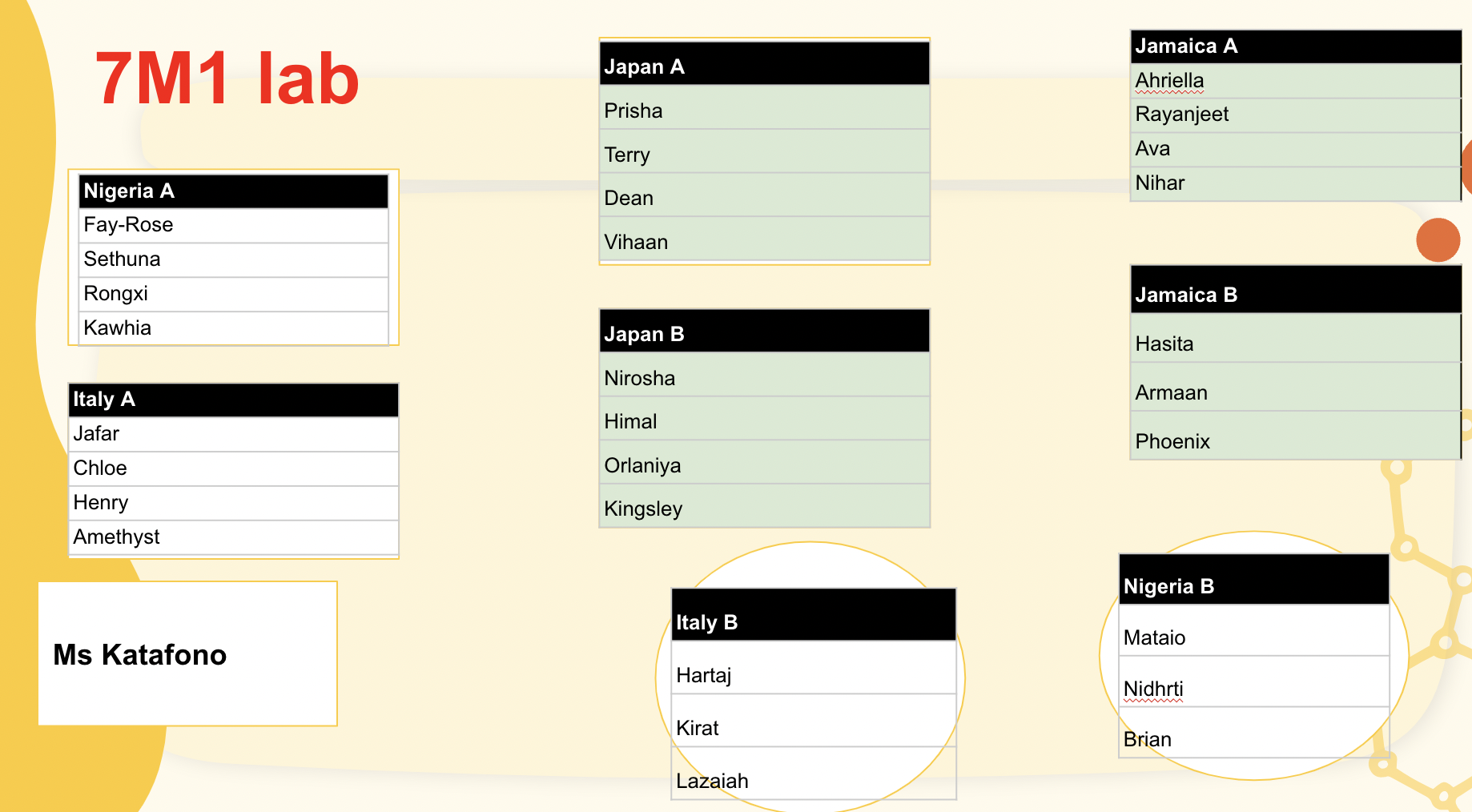
Plan for the next 2 weeks is as follows:
Tuesday: Title page and KWL chart
Wednesday: What is the scientific method
Thursday: Scientific method activity
Week 2:

Tuesday: No lesson - Revolution Tour in Hall
Wednesday: Atomic structure intro and notes
Thursday: SLC - no school
Paearu Angitu / Success Criteria: I can/have...
- 1. Identify the parts of an atom2. Recognize the charges of protons, neutrons, and electrons
Activities:
- Atomic structure in books and video
- Creating an atom mobile ( Week 3)
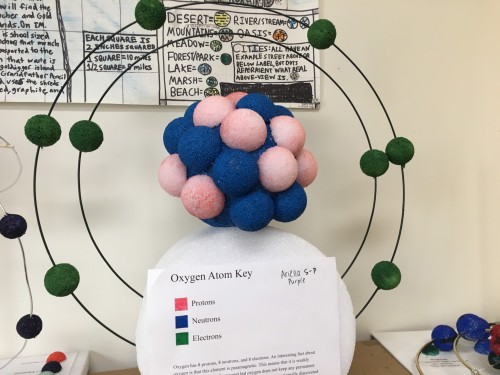
-
FOCUS / ARONGA learning intentions:
- We are FOCUSING on the context of kōtuitui and connecting through the different cultural foods of the countries playing in the FIFA world cup by identifying food as matter and the different parts of its atomic structure
- We are FOCUSING on the context of kōtuitui and connecting through the different cultural foods of the countries playing in the FIFA world cup by explaining the differences between food and what they are plated in by comparing what elements, mixtures and compounds are
Plan for the week is as follows:
Tuesday: Atomic mobile activity and worksheet
Wednesday: Elements mixtures and compounds - notes and video
Thursday: Elements mixtures and compounds experiment and worksheet
Homework: Brainpop assigned task.Paearu Angitu / Success Criteria: I can/have...
- Define elements, mixtures and compounds.
- Describe the properties of elements, mixtures and compounds
- Give examples of elements, mixtures and compounds
- Draw the element, mixtures and compounds at a particle level
Activities:
- Element, mixture and compound experiment
Mahi Kāinga / Homework:
Element , mixture brainpop -
EXPLORE / TŪHURA learning intentions:
- We are EXPLORING our context of connection through the cultural foods from the different FIFA countries by doing rangahau on the different cultural foods in your groups and investigate the states of matter in it.

Key words: freezing point, melting point, solids, liquids, gases
Plan for the week is as follows:
Tuesday: Solids, liquids and gases experiment and worksheet
Wednesday: What are the states of matter. Notes and activity
Thursday: Oobleck experiment and worksheet
Paearu Angitu / Success Criteria: I can/have...
name the three states of matter,
identify the state of matter from images showing the arrangement of particles,
Describe, observe, model, and draw the different states of matter: solid, liquid, and gas.
Observe, make predictions, record results, and explain what happens when different types of matter are mixed together.
Activities:
- Experiment worksheet
- Brainpop
- States of matter experiment
- Oobleck experiment
-
:max_bytes(150000):strip_icc()/physical-and-chemical-changes-examples-608338_FINAL-2-69bf88aa2f774afa8bba8df2ec203e70.png)
Kia ora ākonga,
Plan for the next 2 weeks is as follows:
Week 7:
Tuesday: Notes on chem and phys changes - worksheet activity
Wed: Scientific literacy and video
Thurs: Stearic acid experiment and worksheet
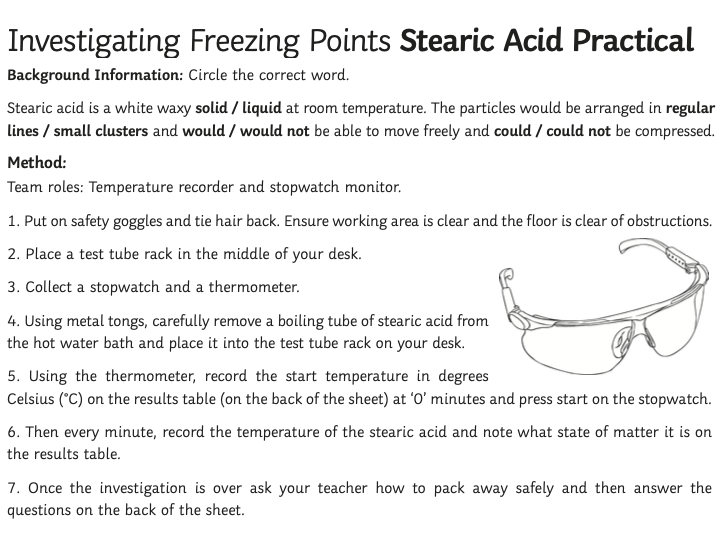
Week 8:
Tues: Phys and chem changes in food
Wed: Apple browning experiment
Thurs: Worksheet and experiment
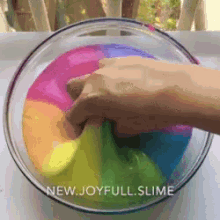
Paearu Angitu / Success Criteria: I can/have...
I can identify physical and chemical changes in food
I can explain the differences between physical and chemical changes in food
Hei Mahi / Activities:
- Stearic acid experiment
- Rotation station observing and determining if chem and phys changes are occuring in different everyday occurrences.
-
EXPLORE / TŪHURA learning intentions:
- We are EXPLORING some common forces we see in everyday life and in different dances.
- We are EXPLORING contact and non-contact force and identify whether different forces are examples of contact or non-contact.

Kia ora Yr 7 and welcome back to Term 4!
Plan for the week is as follows:
Tuesday: KWL chart, context mapping and title page
Wednesday: Types of forces - notes on contact and non-contact forces.
Thursday: Parachute experiment and worksheet
Paearu Angitu / Success Criteria: I can/have...
Name some common forces we see in everyday life and in different dances.
Describe some forces we see dancers use in different dance movements.
Define contact and non-contact force and identify whether different forces are examples of contact or non-contact.
Hei Mahi / Activities:
- Parachute experiment
Mahi Kāinga / Homework:
Parachute activity worksheet -
EXPLORE / TŪHURA learning intentions:
- We are EXPLORING the context of physics through dance by investigating friction and observing the advantages and disadvantages of it through our experiments.

Kia ora Yr 7,
Plan for the week is as follows:
Tuesday: Forces circus experiment and worksheet
Wednesday: Contact vs non-contact forces and friction notes /activity
Thursday: Friction forces experiment
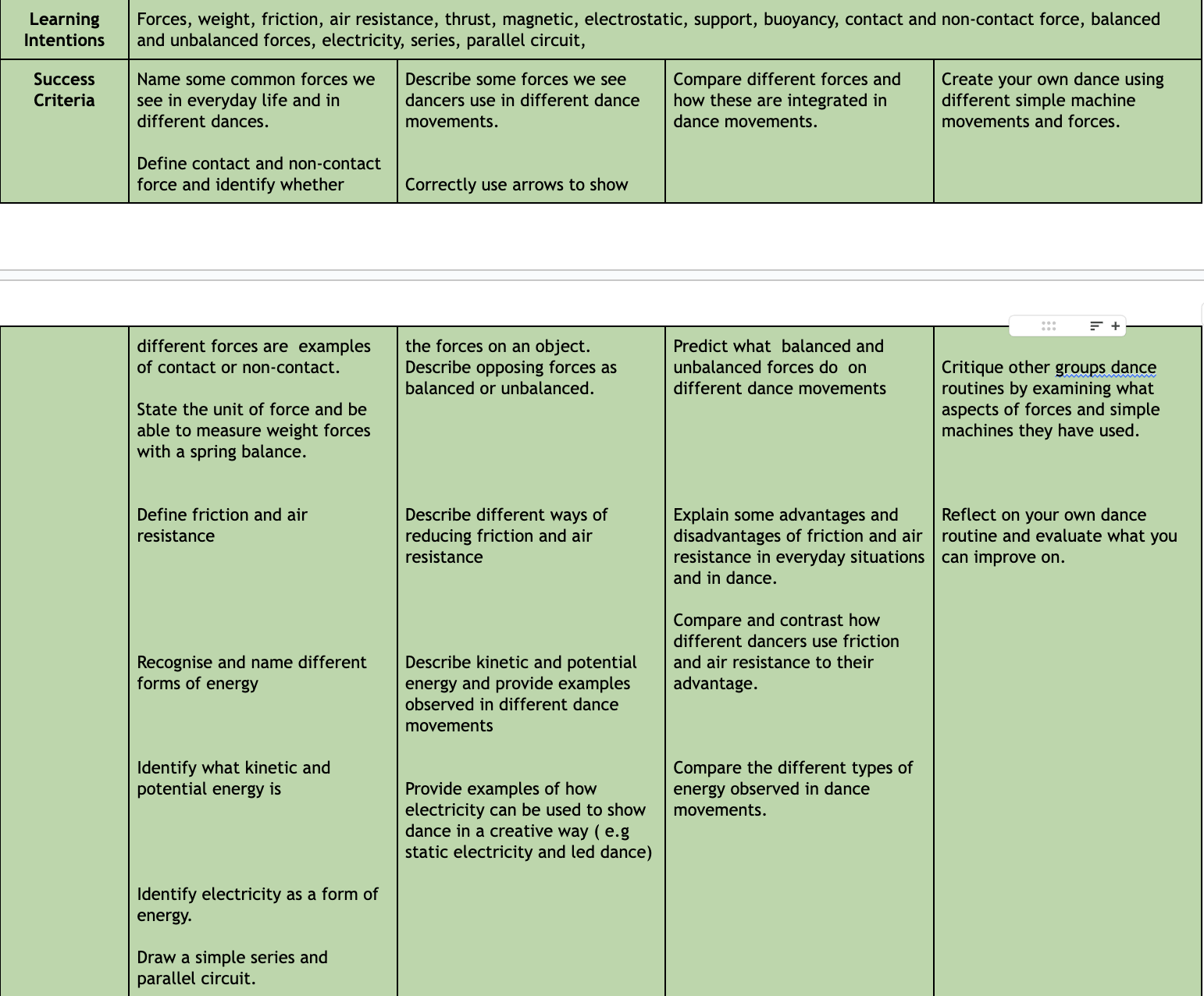
-
EXPLORE / TŪHURA learning intentions:
- We are EXPLORING the context of physics through dance by investigating friction and observing the advantages and disadvantages of it through our experiments.

Plan for this week is as follows:
Tuesday: Friction experiment with worksheet
Wednesday: Friction notes and activity
Thursday: Scientific literacy
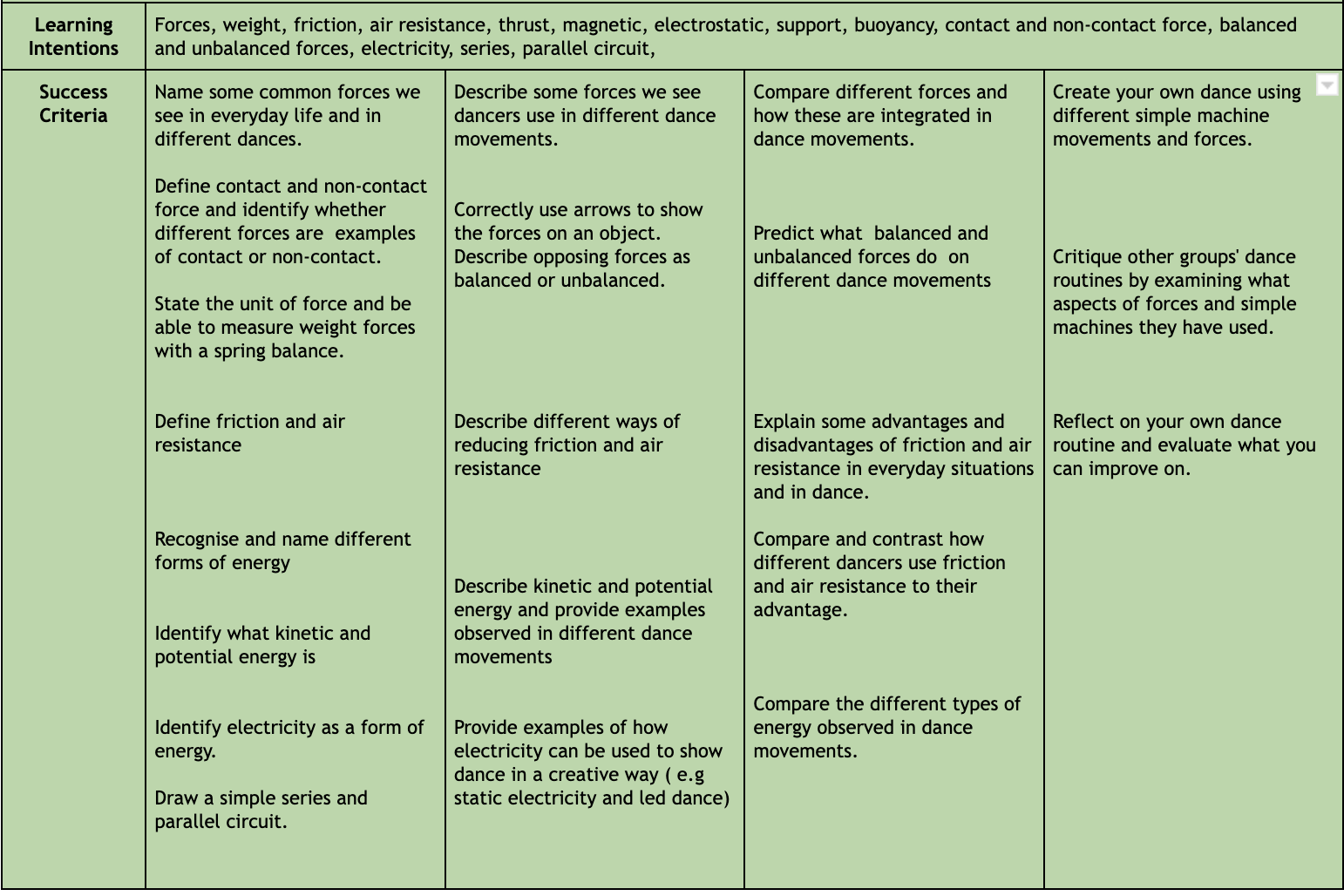
-
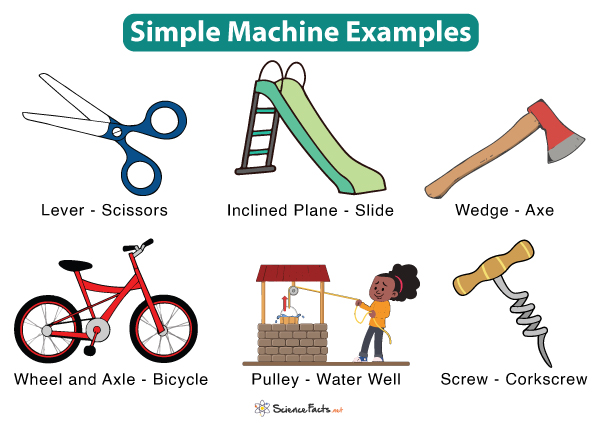
Plan for this week is as follows:
Tuesday: Simple machines notes and worksheet
Wednesday: Using simple machines to create a dance like below
Thursday: Show dance in class and explain the simple machine movement and forces behind this

-
FOCUS / ARONGA learning intentions:
- We are FOCUSING on identifying the three laws in different dance and real life examples by comparing the definitions of these and what the are.
- We are FOCUSING on explaining what balanced and unbalanced forces are by describing these through dance movements

Plan for the next 2 weeks is as follows:
Tuesday: Simple machines expeirment - Catapults and worksheet
Wednesday: Balanced and unbalanced forces notes and activity
Thursday: Magic school bus and worksheet
Week 6:
Tuesday: Newton's Law 1 - notes and activity
Wednesday: Newton's Law 2 - notes and activity
Thursday: Newton's Law 3 - notes and balloon hovercraft experiment
